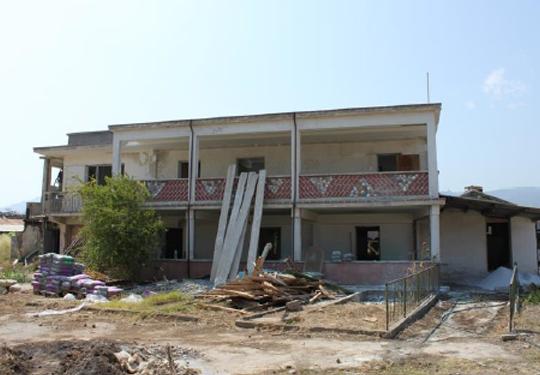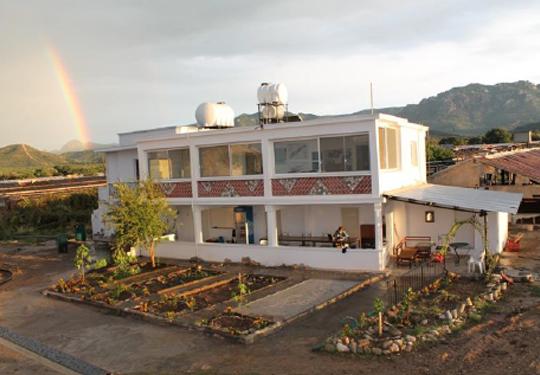Sustainable Cities and Communities
Neolithic House
This Stone Age house is located in the area where excavations were carried out within the scope of the Tatlısu-Çiftlikdüzü (Akanthou-Arkosykos) Rescue Excavation and Research Project. While this Stone Age house is an example of reconstruction work during the Neolithic period pertaining to Cyprus house architecture, dated back to around 8400-7000 BC, the remains were found during the excavation. The house was built by Tatlısu Municipality and many volunteers, with funding from UNDP-PFF. The Stone Age house is open to visitors of all ages and free of charge during the excavations. Visitors can both observe the excavations and examine the Stone Age house closely during their visit where various information is given, making the visit even more meaningful.
Click to see the full pdf file.
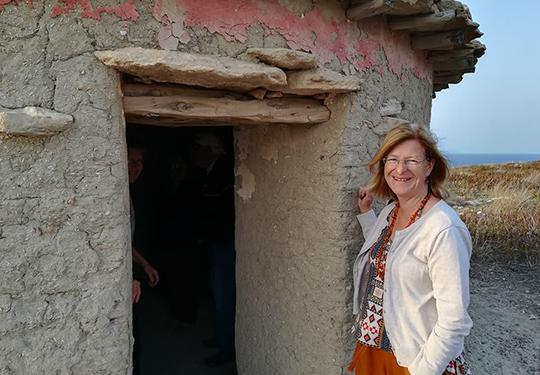
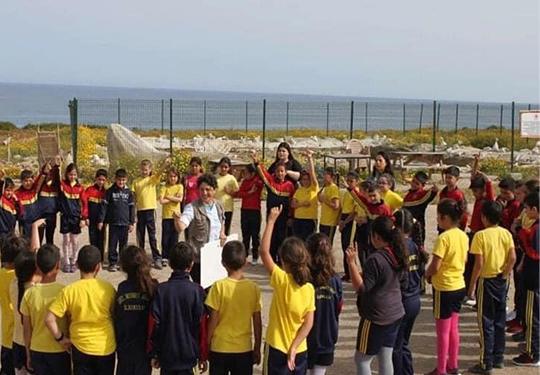

Public access to museums
Excavation House
Excavation and research works have been supported by CIU, the Tatlısu Municipality, and the Scientific and Technological Research Council of Turkey (TUBİTAK).
The exhibition site is located in the excavation house within the framework of the Tatlısu-Çiftlikdüzü (Akanthou-Arkosykos) Rescue Excavation and Research Project. The exhibition, which remains open during the excavation and research efforts, displays 62 findings acquired from the rescue excavations of Tatlısu-Çiftlikdüzü (Akanthou-Arkosykos). Among these findings are a human chin, horns, hooks made of bone and other fish hooks, natural dyes, stone-shaped axes, incisors, pendants, obsidian artifacts, artifacts shaped from picrolite, and various artifacts such as processed sea shells are being exhibited. The exhibition, which can be visited free of charge, is open to visitors of all ages, and information on the displayed artifacts is given to the visitors verbally and this information is supported by posters found in the exhibition room. In addition to visitors, scientists from foreign countries also come to visit these excavations. Photos from the exhibition can be seen in the photos below.
Excavation Site
Tatlısu-Çiftlikdüzü (Akanthou-Arkosykos) is considered to be one of the oldest and first settlements in Northern Cyprus. An invaluable amount of information has been discovered pertaining to Anatolian-Cyprus relations and especially about the Obsidian trade network originating from Central Anatolia, which eventually dispersed from Anatolia into the Mediterranean. The Tatlısu-Çiftlikdüzü (Akanthou-Arkosykos) excavation is the first Turkish Cypriot excavation that has been scientifically initiated in Cyprus.
Excavation Site is an open-air museum, open to our visitors every year during the excavations. One of our missions is to raise awareness about the science of excavations by talking one-on-one with archaeologists and other experts, flint, archaeobotanists, and archaeozoologists while watching how the work is actively done.
The excavation area, which was gradually taken under protection in 2005, 2009, and 2019, has been declared as a 'cultural, archaeological, and natural value' site within the reports written based on the scientific evidence obtained from this project. The Tatlısu-Çiftlikdüzü (Akanthou-Arkosykos) excavation covers an area of 500 decares, which is declared the largest protected area of the TRNC. In this region lies the history of Cyprus, covering the chronological history from 100,000 BC to the 19th century. The overall goal is to establish a closed archaeological and underwater museum.
Click to see the full pdf file.
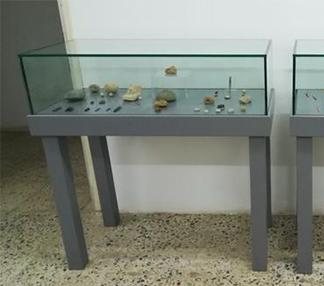
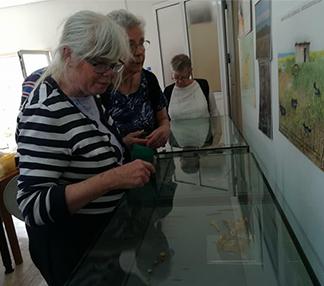
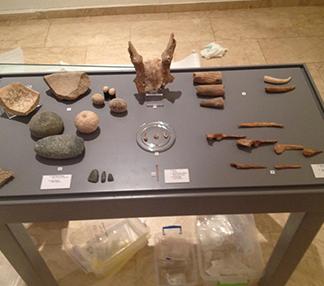
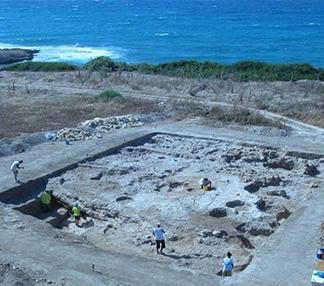
Public access to green spaces
The University currently provides public access to green areas where the community can spend their time.
Click to see the full pdf file.
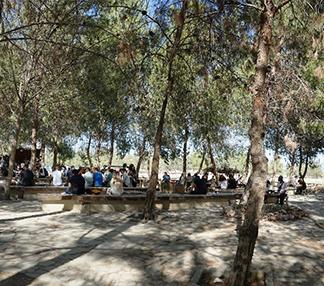
Outdoor Walking Space
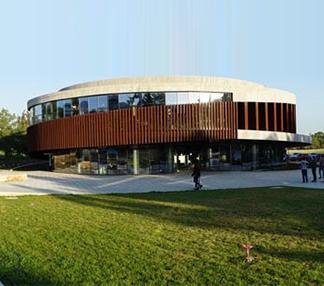
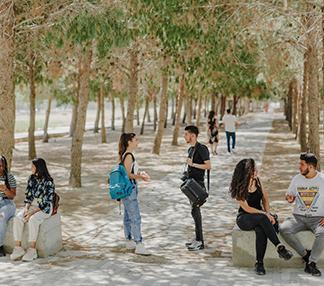
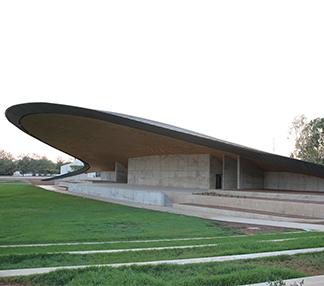
Arts and Heritage Contribution
Cyprus International University contributes to local arts by providing public performances for both students and the local community. Some of the performances can be seen in the file.
Click to see the pdf file.
Record and preserve cultural heritage
Cyprus International University manages an academic journal (Milli Folklore) which records the cultural heritage such as local folklore, traditions, language, and knowledge.
Click to see the full pdf file.
Monitoring and setting targets for sustainable commuting
Cyprus International University provides a free shuttle service for its students and employees to support public transport and reduce carbon emissions. In 2023, 25,026 bus departures from the campus site were recorded (see table below). In 2021, the total number of departures recorded was 10,053. This represents an increase of 118 percent (undoubtedly, vaccination programs and the number of COVID-19 cases impacted this change to some extent). For 2023, increasing the number of departures is targeted as an ongoing process for sustainable commuting of students and staff.
Furthermore, one of the university’s targets is to realize a carpooling software to reduce overall petrol
consumption and minimize carbon emissions.
Another target the university has is to sell at most the same amount of Parking Stamps (see the table for
the number of parking places and the number of parking stamps sold). The university encourages public
transportation by increasing the number of shuttle departures (free service).
Click to see the full pdf file.
Promote sustainable commuting
All the transportation activities carried out in the university are dependent on the actions mentioned in the sustainable transportation policy in the pdf file below. The by-law was approved by the Executive Board of CIU in April 2021.
Click to see the full pdf file.
Click to see how CIU promotes telecommuting or remote working for employees as a matter of policy or standard practice, or offers a condensed working week to reduce employee commuting.
Affordable housing for employees
Cyprus International University offers its lecturers who are from foreign countries free of charge.
In the table below, the number of available flats and the number of occupied flats can be seen. The images of these buildings can also be seen below.
Click to see the full pdf file.
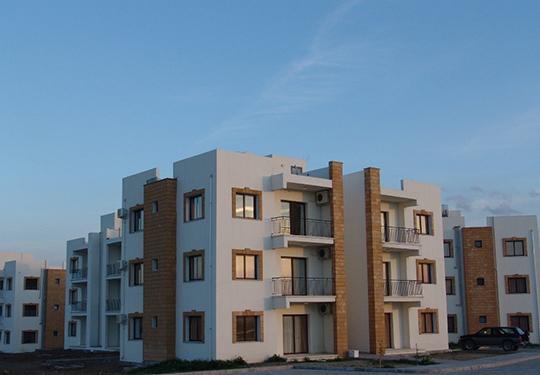
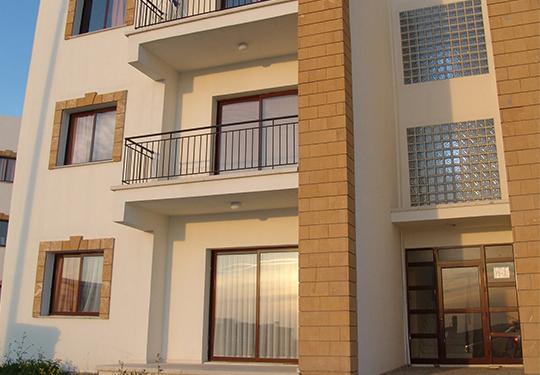
Affordable housing for students
In the Turkish Republic of Northern Cyprus, there is no recognized affordability index. However, we measure and compare our dormitory prices to the dormitory prices within the region (yearly price).
|
CIU |
Average in Nicosia (North) |
|
|
2 Person Dormitory |
1050 Euro + VAT (10%) |
2,875 Euro |
|
4 Person Dormitory |
690 Euro + VAT (10%) |
1,437 Euro |
|
3 (bedroom)+1 Flat |
770 Euro + VAT (10%) |
1,916 Euro |
Click to see the full pdf file.
Pedestrian priority on campus
CIU wants to develop places that will facilitate pedestrian movement. Thus, the following actions have been taken by the university.
- Metal separators ate placed on pavements to prevent parking on pedestrian paths.
- Currently, there is 100 % access to all the buildings and facilities with pathways for disabled people.
- Street lamps for pedestrian paths for night illuminance.
- Due to the new regulations based on increasing the number of visually impaired students in CIU, a project is designed with the sustainable campus team to create a standard environment for such students.
- A bridge between the campus and a small residential location (Haspolat Village) near the campus is completed in 2020 by CIU. It creates a safe and easy path over the highway, for the students and staff.
Click to see the full pdf file.
Local authority collaboration regarding planning and development
Cyprus International University has a representative in the Chamber of City Planners Board of Directors as the president of the chamber (TRNC). Among other contributions, a consultancy has been provided by Dr. Gizem Caner (Faculty of Fine Arts, Design and Architecture) for the strategic planning of the “Surlar içi” which is Slum area of the northern part of Nicosia.
Click to see the full pdf file.
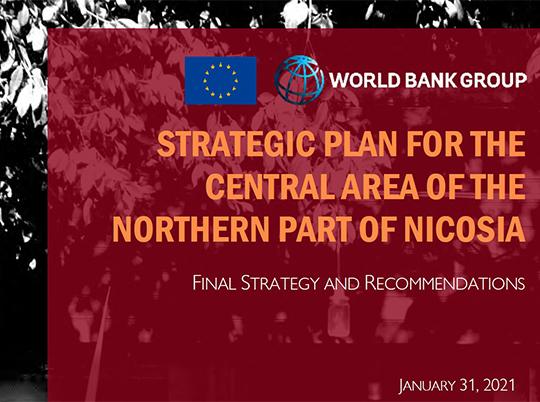
Planning development
Cyprus International University acknowledges the impact of its activities on the environment and thus the university invested and continually improves its smart building and Energy efficiency implementations. Both smart building implementations (See Appendix 1) and Energy efficiency implementations (See Appendix 2) are summarized and shown.
Click to see the full pdf file.
Building on brownfield sites
Our Excavation house is currently in use for mainly excavation projects and includes an exhibition area and a laboratory. This building was in a brownfield before reconstruction. Before and after photos can be seen below.
Click to see the full pdf file.
